Okay, so it’s been a while getting these down – apologies if anyone was waiting (joke).
Right, firstly I need to apologise to Rob and Dave from Whisky Mag for something I said in the last blog.
For the record, I am happy to clarify that my speculation about Whisky Mag relying on Diageo sponsorship was totally inaccurate as they haven’t advertised in the magazine for years. In addition, I would like to make clear that there was never any intention by me to imply that Dave Broom had deliberately given Diageo (or anyone else) favourable editorial coverage. Hopefully you all know already how much I respect Dave and that I would never question his integrity, but if you don’t, you do now. I also sincerely hope that none of you took anything that I wrote as attacking either Dave or Rob personally, it was not what I meant at all. I have edited the post to clarify that.
On with the rest of the predictions and hopefully I won’t get myself into more hot water. Please be aware that the below are just my opinions and speculation, they are not gospel and they certainly do not necessarily reflect the opinions of the Whisky Exchange. As before, if you’re cross or if I’m just plain wrong like last time, I would ask that any factual errors or complaints are reported to me either in the comments or by email (tim[at]thewhiskyexchange.com) – I will be happy to discuss / fix them as necessary.
6. More NAS Malts
It’s been an ever-clearer emerging trend over the last couple of years – and I’m certain that the tide of no-age-statement (NAS) bottlings will continue to batter the shores of the whisky world. Ardbeg and Glenmorangie are probably the most obvious high-profile distilleries to embrace the NAS idea, with a slew of releases – Ardbeg has done Blasda, Corryvreckan, Supernova and now Rollercoaster, while Glenmorangie have come out with Sonnalta and Astar in addition to their standard wine-finished range. Other distilleries to release NAS malts recently include (just off the top of my head): Benromach, Bruichladdich, Ardmore, Glenrothes, Springbank, Laphroaig, Auchentoshan, Bowmore, Benriach, Cardhu, Talisker & Glen Garioch. They’re all at it.
It’s funny – some years ago in my Oddbins days I remember being wined and dined at the Scotch Malt Whisky Society in Edinburgh by Grant’s as part of a market research panel on Glenfiddich. “How can we improve our credibility?” they asked us. To a man we replied “Put an age statement on your whisky”. Presumably they also asked some people who knew what they were talking about, but shortly afterwards the standard Glenfiddich became a 12yo. They must be wondering why they bothered.
So, are NAS malts a good thing? There’s no right answer to that one. When they’re done well, as in the case of something like Laphroaig Quarter Cask, or Glenmorangie Sonnalta, of course they’re a good thing – for me, if a whisky tastes good, it’s ready: the age isn’t significant, and putting younger whiskies in the vatting brings the price down, which we can all be happy about. It comes down to the skill of the master blender – if he can create a big batch of something that tastes great and can be sold cheaper then he’s done a good job in my opinion and I’m not bothered if it doesn’t say 12yo on the label.
Of course, NAS can be a very bad thing if it’s just a case of convenience to the producer, fleshing out a vatting with immature whiskies while keeping the price high – but putting out over-priced malts that aren’t worth what we pay for them is a problem that is neither caused by nor restricted to malts with no age statement on the label, and there are plenty of mediocre 10yo and 12yo whiskies out there proving that point.
In addition, there is no intrinsic property bestowed by a decade in wood that makes one assemblage of 10yo malt better than another one that is mostly 10yo or 12yo but also has a bit of 8yo or 6yo in it, and to think otherwise is absurd, particularly when you think about the scale of some of these vattings in the real world.
Let’s take an example: Imagine five vattings of, say, Caol Ila or Talisker: Four of these contain 200 casks of ten year-old whisky and the other has 190 casks of 10yo and the other ten 9yo. Resist the urge to dive in. After a suitable marriage period and reduction to bottling strength I’d contend that if you think you can tell me which one is the 9yo without admitting guesswork then you are deluded, and there’s definitely no way that that 9yo is automatically inferior. But in the real world that vatting would have to be bottled without an age statement.
Sadly, the pitiful necessity of removing the age statement from a malt just because it has some whisky under ten years old in it is a situation brought entirely on the producers by their own hand. All the major whisky brands have been preaching the fallacy that older is better for so long, and so successfully, that they’ve created a demand they cannot supply. They can’t admit that they were talking crap in the first place, so they have to somehow dress up the fact that they’ve run out of sufficient stocks of their older whiskies. This involves performing what is referred to in journalistic circles as a ‘reverse ferret’ – suddenly younger whisky can be just as good as the old stuff! Who needs age statements?!
You won’t see the prices of the older stuff coming down, of course. That would be silly.
Fortunately, now that these younger whiskies have arrived on the market, it turns out that many of them are actually very good, and a lot of whisky drinkers (myself included) really like them. This is not necessarily because they somehow taste older than they are – frequently it is their youth and freshness that attracts us to them. Not all whisky has to be ‘smooth’: lots of whisky fans genuinely enjoy the rough edges of our favourite drams. If the major producers had cottoned onto this a few years ago they could have saved themselves a lot of hassle and unnecessary expense.
To conclude, NAS malts get a bad press in some quarters and a lot of people look down their noses at them, as if a NAS whisky is somehow automatically untrustworthy or necessarily inferior to a ten year old. This is a ridiculous attitude, and if you hold it, prepare for bad times ahead – because they aren’t going away.
7. Continued strong growth for Irish and American Whiskey.
While the blended Scotch market is struggling with the oligopolistic nature of the drinks industry, with a handful of brand behemoths slugging it out over fairly static mass-market volumes, the Irish and American categories, despite sharing much the same ownership, are amongst the most dynamic in the industry. Why?
The reasons for this growth are easy to see. Both categories are blessed with strong brand-leaders (Jameson and Jack Daniel’s), which are backed by the generous advertising budgets and distribution muscle of their owners, who have successfully created easy-drinking products with accessible brand identities designed for mass appeal. The real question is why they can’t do that for the stagnant Scotch blended category.
The answer to that one is that Scotch whisky has spent decades emphasising its exclusive nature and as a result is now struggling to demystify itself in order to attract younger drinkers without losing its cachet or alienating existing consumers.
It’s all a question of attitude – while many Scotch drinkers throw their hands up in disgust at the mere notion of ice or mixers in their dram, the likes of Jim Beam, Jameson and Jack Daniel’s are rarely seen without their ubiquitous partner in crime: Coca-Cola. This lack of snobbishness makes these brands much more approachable and appealing to younger drinkers, while the po-faced hauteur that regrettably still persists around Scotch (in the UK at least) is a significant barrier to entry for new generations of spirits consumers. No-one wants to be made to feel stupid or ignorant when ordering a drink just because they prefer it with a mixer.
To be sure, the big producers know this and are now, rather belatedly, encouraging people to enjoy whisky however they like it and pretending that they never cared in the first place. But we’re still a long way in this country from the happy situation in Spain or Italy, where large numbers of young people, willingly and of their own volition, are ordering a Johnnie Walker Red or NAS Glen Grant with Coke – and can drink it without being smirked at, patronised or looked down upon. And Irish and American whiskies will continue to profit from Scotch’s self-imposed, short-sighted strategies of the past.
Incidentally, it’s not a coincidence that something like NAS Glen Grant has grabbed this foothold to progress towards the Holy Grail of recruiting happy-go-lucky 18-30s into the Scotch category and parting them from their cash. When you look at it, NAS malts, by virtue of their cheaper prices and easy-drinking no-frills taste profiles (not to mention the lack of guilt involved with putting a mixer in them), actually represent the industry’s best chance of breaking down the barriers to entry to Scotch for younger drinkers and preserving the long-term future of the category. Maybe they just might be not such a bad thing after all?
8. The Movement away from Sherry
This is still a pretty nascent thing, and perhaps it’d be better as a prediction for the next decade, but one thing you can generally rely on is that the behaviour of the really committed whisky fans, the obsessive collectors and drammers, the guys who when they’re not drinking it they’re thinking about it – okay, let’s call them the ‘nerds’, and I count myself amongst them and do not mean the term in a pejorative way – will eventually filter down and be mirrored somewhere down the line by the rest of the market. And it seems to me that an increasing number of these malt ‘otaku’ are beginning to turn their backs on heavily-sherried whisky.
There are probably a few different contributing factors to this shift. The quality of sherry casks used these days is way down on what it used to be, for one thing. The terminal decline of the sherry market is a major factor. In retrospect, the 1960s and 1970s was the golden age for the supply of top-quality sherry casks. Back then, a lot of sherry casks had actually had proper top-end sherry maturing in them (yes, it wasn’t all golden sunshine, they had paxarette as well, but let’s not get into that now).
Nowadays, you can basically wash a cask with supermarket own-label Tramp-Blinder de Jerez for a bit, leave it in there for a few months and that’s a sherry cask. Nowadays, it’s not ok to just tip a few bottles of decent Oloroso into your casks to pep them up a bit.
But leaving aside the issue of however it may have been achieved, sherried whiskies from this golden age have a quality about them that seems to be disappearing now. A really good sherry cask could impart a certain something, a je ne sais quoi – something like Cognac’s rancio, but particular to Scotch, of itself – even in a relatively young whisky. Probably the best whisky I have ever drunk in my life was an indy-bottled sherried Port Ellen 12yo probably bottled in the early 1980s. They literally don’t make ‘em like that any more – they can’t, it’s too expensive. The intensity of that whisky was mind-blowing, the harmony of muscular peat and sweet sherry was awe-inspiring – but I fear that we will not see its like again.
All the above is a big reason why sherried whisky is not what it was. But there are other factors in this movement, which I stress again is in its early days. One of these other factors is that there seems to be a growing attitude amongst some serious whisky fans that putting a whisky into a sherry cask is somehow cheating, that it hides the true distillery character and that bourbon casks are more natural and allow the spirit to express itself while sherry casks (or sherry-finishing) can be used to cloak a mediocre malt. In short, that sherried whiskies are more about the wood than the spirit.
Personally, I think this theory is utter bollocks, but I’ve seen it expressed, so I thought I’d mention it. I don’t see how influencing a whisky by putting it in a sherry cask is somehow less ethical than putting it into a bourbon cask, and if you follow this argument to its logical conclusion you can only drink new make spirit, so I won’t be subscribing to this particular way of thinking. But it exists as a mindset amongst some whisky fans, so it needs to be acknowledged as a factor in the shift from sherry.
However, notwithstanding all of the above, the real clincher in this movement away from sherried whisky is that there are simply too many sulphury drams on the market. Personally, where before I would always get excited about the arrival of a new sherry monster, I now find myself hesitating as I contemplate a bottle of something dark. So appealing. It should be amazing. But what if it’s sulphury?
I make no bones about my hate for eggy, rubbery, sulphury whiskies. It’s an instant turn-off for me. So naturally I don’t want to fork out forty or fifty or eighty quid for a dram I’m going to hate, and I’m afraid that where sherried whiskies are concerned it’s got to the stage where I now keep my wallet in my pocket unless or until I’ve tried it myself or read a tasting note from someone I trust that explicitly states that there is no trace of sulphur in it. Please note that here I am referring to the revolting sulphury notes that you get from the cask as a result of sulphur candles having been burnt inside them, not the gunmetal, flinty notes that sometimes occur naturally in the spirit, which can sometimes work in the final product.
So I’m not going to take the risk on an expensive sherried whisky (and they ARE more expensive, sometimes ridiculously so). I’ve been burned too many times. It’s the worst feeling in the world to excitedly crack the seal of a pricey new bottle, only to come down to earth with a shattering bump as that sulphury reek blitzkriegs your nostrils while you’re pouring your first dram. The horror of knowing that you’ve just blown your budget on a whisky you know you’re going to hate – before you’ve even tasted it – is traumatic to us nerds. We don’t like it.
Now, I’m not saying that sherried whisky is going away – far from it. And I still enjoy a good quality peaty sherried dram more than anything else. There will always be a place for the kind of sherried whisky we get now, and the good ones are still well worth it. I remember the first time I tried Aberlour a’bunadh, back when I lived in Glasgow – I was totally blown away. It was a formative moment, a key step on my whisky path. It’s not an exaggeration to say that that particular sherried whisky probably helped shape my career. And gentle, sweet, sherried whisky is one of the best ways to introduce single malts to someone who hasn’t tried them.
But I’m afraid that unless these sulphury casks are clamped down on and rooted out before they reach the blending vats a proportion of those soothsaying nerds will continue to preach against sherried whisky. That’s a big part of the problem, right there – cask control. One sulphury cask can affect a whole vatting, and too many of them are getting through. It’s not good enough.
Personally, as I’ve said, I’m voting with my cash – I won’t spend it until I’m sure there’s no sulphur involved, and no doubt I’ve missed out on various good or great whiskies because of it. But I can’t afford to be pouring money down the sink. Which leads me to be frustrated with the state of sherried whiskies. And I’m certain that I’m not the only one.
9. A big debate about Ardbeg
Ah, Ardbeg. Ardbeg, Ardbeg, Ardbeg. Of course there’s going to be a debate about Ardbeg. It’s unlikely a day goes by without some forum or blog getting into a discussion about Ardbeg. Predicting a debate about Ardbeg is a bit of a cheat, like predicting Liverpool aren’t going to win the Premiership. It’s a gimme. And believe me, I say both of those things with a heavy heart.
I do predict, though, that the tone of some of these debates is going to change a bit. News is trickling out that LVMH, Ardbeg’s custodians – and apologies for labouring the analogy here but, like Liverpool, Ardbeg is bigger than its owners or its bottom line. On a deeper level, Ardbeg belongs to its fans. The money men are just custodians – LVMH have slashed the supply to the UK in search of bigger bucks in foreign climes. And I don’t say slashed lightly. When I say slashed, I mean a small fraction of last years supply.
It feels a bit like having your partner running off with someone better looking, or perhaps text ‘sexy’ pics of themselves to some no-good slapper.
Perhaps Ardbeg is effectively saying, “Look, it’s not you, it’s me. Don’t make a scene and embarrass me in public. Stop crying. Let go of my leg. We’ve been together a long time. I’ve changed. We don’t have so much in common any more. You should move on. You’re too mature for me. And besides, I can make so much more money by selling myself in developing markets overseas. But I’ll still be around sometimes. Let’s stay friends, yeah? I’ll call you.”
Now, perhaps we should have seen this coming. Ardbeg is not a big distillery in terms of output and of course there is money to be made outside the UK where we all suffer under a ridiculously high tax and duty regimen (OK, don’t start Scandinavia – we know you’ve got it worse).
But it’s still a bit of a shock, and it’s definitely going to get some people hot under the collar if the price starts going up. It remains to be seen how far LVMH are prepared to stick to their guns. One well-known retailer has already posted an ever-so-slightly bitter message that they’re out of Ardbeg 10yo – along with a sniffly note asking when is Ardbeg going to come over and pick up its CDs and a price rise to £35 quid a bottle for when it returns. Now whether or not this price rise will come to pass is unclear. My guess is that there will remain a trickle of supply for retailers. In other words, Ardbeg will be around for a bit yet, and will reappear periodically for a metaphorical roll in the hay with the UK market.
In any case, it seems likely that a lot of people may decide it’s not worth it after all and they want to keep their dignity – and those people will simply switch to Laphroaig or Lagavulin, which is the metaphorical equivalent of swallowing your pride and hitching your wagon to your ex’s equally good-looking, more available, less fussy siblings – the sensible option, in other words. Others, of course, will take the Cheryl Cole approach, grit their teeth and fight for their love, and you can’t really blame them for that. Ardbeg is still putting out great whisky that everyone wants to drink. The price they are prepared to pay for it is a matter of individual conscience. Let’s not forget in all this that there are other Ardbegs out there, or at least things that may or may not be so very like them that you wouldn’t be able to tell the difference because there isn’t one. Ahem.
Don’t worry, Ardbeg – we still love you. I’ll be posting my tasting notes of the new Rollercoaster very shortly here on the blog.
The most important thing, of course, is that if there are to be any blame and recriminations, that they should not directed at Mickey Heads or anyone else who actually works so hard at the Ardbeg distillery to make it the fantastic whisky it is. It’s not their decision, please bear that in mind and take a deep breath before posting any shouty comments. Bear in mind also that I have a responsibility to my work as well as to you my readers, and I won’t be publishing anything abusive or inflammatory.
10. TWE to continue being The Daddy
Apologies for blowing our own trumpet, but…PAAAARP!!! We’ve won Best Independent Spirits Retailer at the highly prestigious Drinks Retailing Awards – again!
We’ve got all kinds of good stuff coming up this year as well. You wouldn’t believe it! Well, you probably would, actually, we’re not secretly from Mars or anything. Do keep an eye on our site, though, we’re going to be a doing a lot more good work this year.
The bad news, meanwhile, is that you’ll be hearing more from me as well – there will definitely be more blog posts this year. They won’t be as long as this one (and that’s a promise you can take to the bank. My aching fingers!) – But there will definitely be more of them, starting from next week.
Anyone agree or disagree with the old predictions, then? Let me know what you think in the comments section below. But don’t be too nasty or you’ll have this guy to deal with.


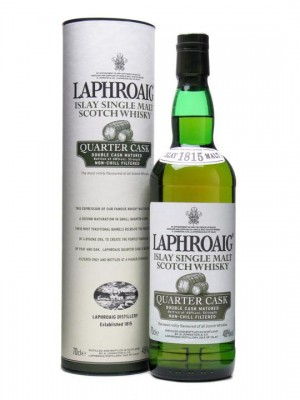
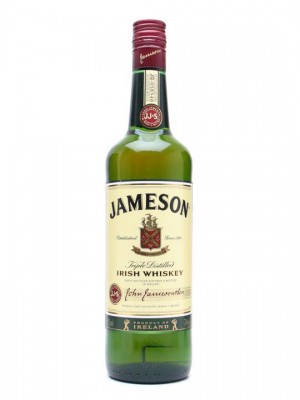
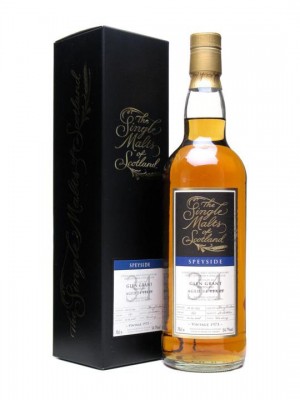
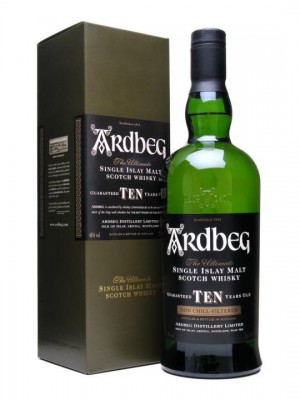


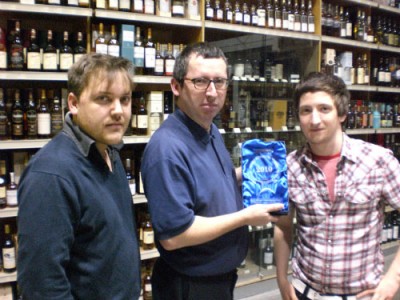
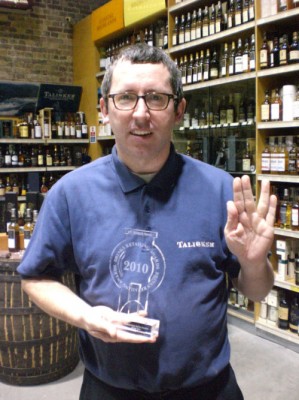
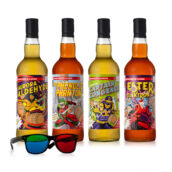
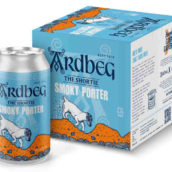

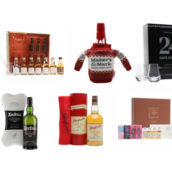




 Enjoy responsibly
Enjoy responsibly
Comments
How can I be expected to comment? I’m bloody exhausted after reading all that!
Great stuff, TIm. Tell me, I keep predicting that very soon we’re going to see 25cl or 35cl bottles of new make on the market. Every time I’ve been to a distillery one of the most exciting aspects of being there is tasting new spirit. I also hear this from friends who attend distillery run tastings. Given the success of the 2 Year Old “New Spirit” from Kilchoman, do you think we’ll see new make hitting the shelves at some point? (Especially given the cask situation that you discuss above in the sherry section.)
Cheers,
Jason @WHISKYhost
Tim, Nice piece.
On American whiskey, this:
Outside of the regular brands, there is a strong movement towards premium whiskey.
Buffalo Trace is one of the strongest players with several collections.
Also independent micro distillers are busily working away, to eradicate the notion, that American whiskey is just a drink that is taken with suitable measures of cola.
I predict, that American whiskey will be as highly regarded as Scotch whisky.
You did start writing that wee piece immediately after publishing the pt 1, eh? Many words, many thoughts, some good, some where I cannot comment (read: American and Irish).
Ardbeg. Yes. We like the whisky very much, many of us – some even to the point of it being an obsession. I, for one, do not like the exact attitude you mention. I also feel sorry for the guys and gals at Ardbeg itself, as they get some stick for the ignorant arrogance and sheer greed of their owner. Well, the owner is a business and it does show, doesn’t it…
NAS whiskies. Yes 2. And while some of us, like yours truly, like young and lively whiskies, many unfortunately think they don’t and only rate highly the whiskies that are of such and such age or more. (On a side note, this also does not appear to be quite true when talking about … Ardbeg.) They are missing out on some very good whiskies. A little different, but very good. But let’s also face the music and admit that there not a few but rather a few crappy NAS malts out there and they are not doing the rest any service at all.
TWE being the Daddy? Perhaps. And, if so, not undeservedly. I just regret that us Scandinavians have such high duty rates and extremely greedy tax authorities so we cannot buy without an added ticket, but at least we can buy, without having to risk interference.
Movement away from Sherry casks. I concur that there are many over-sulphured and rather sloppy “Sherry cask” jobs out there and that they can range from acceptable to disgusting. (By the way, noted that the Diageo “Distillers Edition” range does not mention “Sherry” etc on the labels. This is due to them seasoning whatever nice casks they find – in Scotland – with a wine resembling the real thing they want it to appear like. Thus, you get a “Moscatel” cask, or an “Amoroso” cask etc. Which everyone would associate with being the real Sherry deal, which it is not. And which the label does not state, though indicate. The result can be very good, so it is not that, but I wish the label wasn’t so deceptive, as it doesn’t really get full honesty marks.) Anyway, I know there are also some really good casks, from high quality oak and having been seasoned with real Sherry (softening them up as much as or more than actually spicing them with wine), that are being used by some parties today. Especially when going into malts. Getting a real Bodega Sherry cask today seems to mean you have to own a Bodega, more or less.
One further prediction, or if it be question, that I would add is: when will people realise that there are so many other good sources of former wine casks than Jerez? The better vineries are fussy about their casks and they can and do produce some excellent maturation jobs with whisky. So why not? And while we’re at it, why not also state “European oak wine cask” rather than poshing about with the name of a particular Chateau, just as if one had made a cocktail of malt and wine (which I sincerely hope is never the case, but sometimes suspect is the case)?
Rant over / Pär
[…] over recent times there has been endless debate about the merits of age as a yardstick (with Tim’s predictions from 2010 now looking even more prescient), as opposed to trusting the producers to make good whisky, with […]